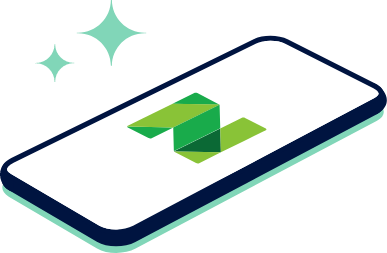The Best Budget Apps for 2025
NerdWallet’s editorial team evaluated a wide range of budgeting apps based on features, user reviews, and usability to identify top options for 2025. Our recommendations include tools tailored for individuals, couples, and wealth tracking
Many, or all, of the products featured on this page are from our advertising partners who compensate us when you take certain actions on our website or click to take an action on their website. However, this does not influence our evaluations. Our opinions are our own. Here is a list of our partners and here's how we make money.
Basic budget apps typically connect with your financial accounts, track spending and categorize expenses so you can see where your money is going. But the best budget apps do much more.
NerdWallet's editorial team assessed budget app features and user reviews to arrive at top choices for you to consider. See our full methodology at the bottom of the page.
On this page
- Monarch Money, for customized budgeting
- YNAB, for hands-on zero-based budgeting
- Goodbudget, for hands-on envelope budgeting
- Empower Personal Dashboard, for tracking wealth and spending
- PocketGuard, for a budget snapshot
- Honeydue, for budgeting with a partner
- EveryDollar, for simple zero-based budgeting
- Copilot Money, for autocategorization
- WalletHub, for credit monitoring
- Popular budget apps, according to Reddit users
Monarch Money, for customized budgeting
Monarch Money made the cut thanks to its robust lineup of features and customizable budgeting tools that are great for singles or couples — you can add a household member to the subscription at no extra charge.
Monarch allows you to sync bank accounts, credit cards, loans and investments. After syncing, users choose between two budgeting strategies: flex, the default option, and category.
Flex budgeting is a high-level view. It shows three buckets: your fixed expenses, non-monthly recurring expenses (like insurance premiums and kids activity fees) and flexible expenses, which includes all the expenses that vary from month to month — think groceries, dining out and shopping — in a single number.
Category budgeting is the more traditional and detailed view, which prompts users to set limits for specific types of expenses, from your utility bills to clothing purchases.
Beyond these budgeting features, Monarch provides a net worth tracker, investment dashboard, personalized reports and reminders of upcoming bills. The collaboration tools also set the app apart. You can tag expenses and set shared savings goals.
The app is available on desktop and mobile.
Why you may want to think twice
Monarch is one of the most expensive apps on the list, but one fee gets you access to all the features (in other words, there's no tiered memberships). However, its features are so extensive that it may not be worth the cost if you’re looking for a simpler tool.
Cost
Monarch is $99.99 if paid annually, or $14.99 per month if paid monthly. There's a free seven-day trial and money-back guarantee.
Ratings
App Store rating: 4.9 stars
Google Play rating: 4.8 stars
» We tried this app. See our Monarch Money app review
YNAB, for hands-on zero-based budgeting
This app is designed so that users plan ahead for their financial decisions, rather than track past transactions. YNAB follows the zero-based budgeting system, which has you make a plan for every dollar you earn.
As soon as you get paid, you tell YNAB how much of your income should go toward various categories, including spending, savings and debt. The idea is that you become more intentional with your money when you’re prompted to actively decide what to do with it.
With all this decision making, the YNAB app is a hands-on way to budget money. To help users trek up that learning curve, YNAB’s website offers many educational resources describing exactly how to budget and use the app.
YNAB allows you to link your checking and savings accounts, as well as credit cards and loans. Or you can opt out of syncing your accounts and manually add or import your transactions, if you would prefer.
The app also features a loan payoff simulator, as well as the “YNAB Together” function. The latter is designed for partners, parents, caregivers or other close connections. It allows up to five users to share a membership.
The app works on mobile, desktop, iPad and Apple Watch.
Why you may want to think twice
You have to be committed to keep up with YNAB. By design, it works best for users who want to get hands-on while planning for their money. For many people, this involved approach works — in fact, the YNAB subreddit boasts more than 45,000 visitors each week.
But it’s not for everyone. If you’re unlikely to be motivated by a high level of upkeep, try another app later in the list.
YNAB is also pricey, so if you’re trying to save money, consider one of the free or less expensive budget apps below.
Cost
YNAB costs $14.99 if you pay per month, or $109 if you pay annually, although you can try it out in a free 34-day trial. College students can use YNAB for free for a year.
Ratings
App Store rating: 4.8
Google Play rating: 4.6
» We tried this app. See our YNAB review
Stress less. Track more.
See the full picture: savings, debt, investments and more. Smarter money moves start in our app.
Goodbudget, for hands-on envelope budgeting
Goodbudget is more about planning your finances than tracking previous transactions. This app is based on the envelope budgeting system, in which you portion out your monthly income toward specific spending categories (called envelopes).
The free version doesn’t connect to your bank accounts. You manually add account balances (that you can pull from your bank’s website), as well as cash amounts, debts and income. Then you assign money to envelopes.
That free version allows one account, two devices and limited envelopes.
The paid version, Goodbudget Premium, allows unlimited envelopes and accounts, up to five devices and other perks. You can also link checking, savings and credit accounts to allow automatic tracking.
You can access the app from your phone and the web. You’ll also find many helpful articles and videos that help you use the app. Goodbudget provides courses related to budgeting, paying off debt and more.
Why you may want to think twice
Because you can’t sync financial accounts with the free version, you must enter every expense. If you’re not up for that work, the app probably won’t be effective.
Cost
Goodbudget is free. Goodbudget Premium is $10 if you pay per month, or $80 if you pay per year.
Ratings
App Store rating: 4.6
Google Play rating: 3.3
» We tried this app. See our Goodbudget review
Empower Personal Dashboard, for tracking wealth and spending
Empower is primarily an investment tool, but its free app includes features helpful for budgeters looking to track their spending.
You can connect and monitor checking, savings and credit card accounts, as well as IRAs, 401(k)s, mortgages and loans. With that information, Empower offers a net worth and portfolio tracker.
For its budgeting features, the app provides a spending snapshot by listing recent transactions by category. You can customize those categories and see the total monthly spending each category represents.
The app can be accessed through phone, tablet and desktop.
Why you may want to think twice
If your goal is to plan out your spending and saving, you may want to go another route. This app’s budgeting features helped it make the list, but its investment tools are what make it unique. Other apps have more advanced budgeting capabilities.
Cost
Empower is free.
Ratings
App Store rating: 4.8
Google Play rating: 3.2
» We tried this app. See our Empower Personal Dashboard review
PocketGuard, for a budget snapshot
PocketGuard is another app that follows the zero-based budgeting framework.
Start by connecting your credit, checking and savings accounts. Then provide your monthly income and spending categories, such as rent or mortgage, utilities, groceries and transportation costs.
With that intel, the app shows a detailed view at your incoming and outgoing cash flow. It also shows how much you have left to spend after setting aside money for necessities, bills and savings goals.
You can now customize how your transactions are categorized — and you can do it in bulk, rather than manually changing categories one by one (Note: there are limits on how many times free users can do this).
PocketGuard also provides a net worth tracker, which allows you to sync investment accounts, track property values and manually track other assets.
Other PocketGuard features include a savings goals tracker, a debt payoff plan and a tool designed to identify unwanted subscriptions and cancel them.
You can access PocketGuard on the web, phone and Apple Watch.
Why you may want to think twice
This app does a lot of work for you. That’s good for a mostly hands-off experience, but less so if you want to actively plan for your money.
Cost
PocketGuard offers a free seven-day trial. After that, it costs $12.99 per month if you pay monthly, or $74.99 per year if you pay annually.
Ratings
App Store rating: 4.6
Google Play rating: 4.2
» We tried this app. See our PocketGuard app review
Honeydue, for budgeting with a partner
Honeydue is designed so you and your partner can view both your financial pictures in one app. Both partners can sync bank accounts, credit cards, loans and investments. (Although you can choose how much you share with your significant other.)
The free budget app automatically categorizes expenses, but you’re also able to create custom categories. Together, you can set up monthly limits on each of these categories, and Honeydue will alert you when you or your partner is nearing them.
Honeydue also sends reminders for upcoming bills and lets you chat and send emojis.
Why you may want to think twice
Like a few other apps on our list, Honeydue leans more toward reflecting and learning about past transactions, rather than planning ahead for expenses. Recent reviews include complaints about syncing issues, the inability to search shared expenses and the having to manually enter regular transactions, such as a pay day every two weeks, because automation isn't possible.
There’s also no desktop version for budgeters who’d prefer a bigger screen.
Cost
Honeydue is free.
Ratings
App Store rating: 4.5
Google Play rating: 4.2
» We tried this app. See our Honeydue review
EveryDollar, for simple zero-based budgeting
Everydollar, designed by personal finance expert Dave Ramsey’s company Ramsey Solutions, offers another zero-based budgeting framework.
Let’s start with the free version of the EveryDollar app. You don’t sync accounts, but rather manually enter incoming and outgoing money throughout the month. You also categorize line items in your budget.
The paid version of EveryDollar includes those features and allows you to connect your bank account. Your transactions automatically appear in the app, which also provides custom reports and recommendations based on your habits.
EveryDollar is available on both mobile and the web.
Why you may want to think twice
The free version of EveryDollar is bare-bones, and the premium version is pretty pricey. Also, the app’s website offers few resources to help you understand how to use the app before signing up for a trial.
Cost
The basic version of EveryDollar is free. You can try the premium version for free for 14 days. After the trial, you pay $79.99 a year if you pay annually, or $17.99 a month if you pay monthly.
Ratings
App Store rating: 4.7
Google Play rating: 4.3
» We tried this app. See our EveryDollar review
Copilot Money, for autocategorization
Copilot uses AI to autocategorize spending. The platform, designed solely for Apple users, learns how and where you spend your money to make better predictions and suggest savings goals.
While Coilot can help you budget, it is better suited to give an overall understanding of your finances by tracking all of your financial activity in one location. Net worth, investments and spending habits make up your account.
One notable feature is the scope of tracking that provides snapshots of daily spending and upcoming bills as well as a high-level overview of cashflow.
Why you may want to think twice
Copilot is designed for Apple devices and there is not currently an app available for Android or PC users.
Cost
Copilot Money costs $13 per month, or $95 if billed annually. A one-month free trial lets you try it out before buying.
Ratings
App Store rating: 4.8
WalletHub, for credit monitoring
WalletHub is a multifaceted financial app that hosts several areas of financial wellness: spending, credit, investments and identity protection.
The free version is only focused on credit, providing daily credit reports and scores, as well as credit monitoring and credit improvement tips. To access the other features, including budgeting, you’ll have to upgrade to the premium version.
For budgeting, the platform hosts a spending tracker, budgeting tool and subscription manager. It also provides a financial “score” to assess your overall financial health.
Why you may want to think twice
WalletHub is not exclusively a budgeting app. It splits its focus among other financial topics with a heavy focus on credit scores. Depending on your needs, this could be a pro or a con.
Cost
A free version of WalletHub is available if you are only interested in credit monitoring. WalletHub Premium costs $2.99 per month, billed annually, with a 30-day money-back guarantee.
Ratings
App Store rating: 4.8
Google Play rating: 4.7
Popular budget apps, according to Reddit users
We sifted through Reddit forums to get a pulse check on how users feel about budget apps. We used an AI tool to help analyze the feedback. People post anonymously, so we cannot confirm their individual experiences or circumstances.
Users stress that the best budget app is the one you’ll actually use and stick with. Users also say you get what you pay for, noting apps with fees tend to offer more features. These references rose to the top of our analysis.
- YNAB is frequently thought of as a top choice, with its biggest caveat being cost.
- Monarch Money garners positive reviews and is often cited as a good replacement for users of the now defunct Mint app.
- Copilot gets mentioned multiple times as a good option that's only available to Apple users.
- Google Sheets and Excel come up consistently as a free and customizable way to make a budget.
Are budget apps secure?
Aggregators and your data
Budget apps that sync your accounts typically rely on third-party companies called aggregators. These companies (like plain, Yodlee and Finicity by Mastercard) connect connect to your bank, credit card and other financial accounts to pull your data.
It's important to understand how these companies protect your information before deciding whether to connect your accounts. To learn more, search online for the app’s name plus “security” for details.
Choose apps that use bank-grade encryption (AES 128-bit or 256-bit) and that support or require multi-factor authentication. Both add strong layers of protection for your data.
If you'd rather not link your accounts, consider apps that let you enter your information manually, such as YNAB or GoodBudget, or try web-based tools like the ones listed below.
Methodology to identify the best budget apps
How we came up with the list
Our editorial team looked for apps that allowed users to do the following:
- Sync several types of financial accounts (and opt out of syncing).
- Plan ahead for financial decisions versus simply tracking past transactions.
- See their expenses categorized in order to understand spending patterns.
- Track bills and receive alerts for upcoming due dates.
- Share financial information with partners.
- Access the app via both the mobile app and desktop.
Our experts also looked for nice-to-have features, such as showing credit score and net worth, as well as investment trackers and detailed help guides. And we noted apps that were free or relatively inexpensive.
The experiences of real users matter, too. So we read reviews of the apps in the iOS App Store and Google Play, noting complaints and kudos. We only included apps that received at least 4.5 stars out of 5 in the iOS App Store or at least 3 out of 5 on Google Play, as well as at least 1,000 reviews. Those ratings were checked and updated on Dec. 1, 2025.
Budgeting resources from NerdWallet
Explore our free tools
We offer other free budgeting tools you can try:
- Use NerdWallet's budget template to record your expenses.
- Compare other online budget spreadsheets for a quick check of your finances.
- Estimate how to divide your monthly income with a budget calculator.
- Try the free NerdWallet app, which lets you track your cash flow and net worth. You can also monitor your credit score.
Stress less. Track more.
See the full picture: savings, debt, investments and more. Smarter money moves start in our app.
Article sources
NerdWallet writers are subject matter authorities who use primary,
trustworthy sources to inform their work, including peer-reviewed
studies, government websites, academic research and interviews with
industry experts. All content is fact-checked for accuracy, timeliness
and relevance. You can learn more about NerdWallet's high
standards for journalism by reading our
editorial guidelines.
Related articles








